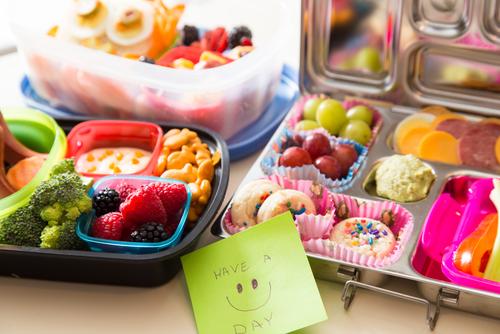 Parents want what is best for their children, but do not necessarily always know how to provide it. This is especially true when it comes to contributing positively to a picky child’s food eating habits. Parents are always in search of the coveted secret to getting their picky eater to eat healthier, but there isn’t one. If you find yourself in this position, you are not alone.
Parents want what is best for their children, but do not necessarily always know how to provide it. This is especially true when it comes to contributing positively to a picky child’s food eating habits. Parents are always in search of the coveted secret to getting their picky eater to eat healthier, but there isn’t one. If you find yourself in this position, you are not alone.
Children can be very picky and it is no easy task to incorporate healthy foods into their diet. On top of this, children rapidly grow and change and are regularly exposed to new stimuli that may lead them away from healthy eating. Despite how challenging the task may seem, there are strategies parents can use to help encourage their children to eat healthier. There are no quick and easy fixes here, and no one strategy will work for all children.
My hope is that today’s posting will provide you with one or two new ideas that will contribute positively to your efforts to encourage your picky eater to eat healthier foods. You should not expect a rapid revolution in your child’s diet. Cherish small and meaningful changes over time and know that these small changes can lead to significant improvements in the long-term.
Strategies to Encourage Healthy Eating in a Picky Eater
Lead by Example
Setting a good example will not guarantee you success but it will provide you with a strong foundation to achieve it.
 It will certainly be much harder to encourage your picky eater to eat well if their parent(s)/caregivers are not doing so, especially if the appropriate healthy foods are not regularly available in the household.
It will certainly be much harder to encourage your picky eater to eat well if their parent(s)/caregivers are not doing so, especially if the appropriate healthy foods are not regularly available in the household.
If you are able to regularly and consistently demonstrate healthy eating habits to your children and allow healthy foods to be regularly available, your chances of success will certainly improve.
Eat Together
This may not always be possible, but it is advisable that you eat meals together with your picky eater as often as possible.
 Following the previous point, eating together provides the perfect platform for leading by example and it also helps children avoid distractions ( such as TV, electronics etc), develop proper relationships with food and be more aware of their own hunger and fullness.
Following the previous point, eating together provides the perfect platform for leading by example and it also helps children avoid distractions ( such as TV, electronics etc), develop proper relationships with food and be more aware of their own hunger and fullness.
Related: How to Set the Stage for an Enjoyable Meal with Your Child
Limit the Sweets
Sugar consumption is a highly contentious issue for many. Many children love sweets and treats and you will probably not be able to drastically alter this reality. I’m not going to go overly deep into this issue besides to say that food items such as candy, soft drinks, and other treats, offer pretty much nothing to your child from a nutritional standpoint.
 My suggestion is simple: limit the availability of these foods in your home. Do not ban children from these foods, but try to teach them that they are meant to be enjoyed on an occasional basis.
My suggestion is simple: limit the availability of these foods in your home. Do not ban children from these foods, but try to teach them that they are meant to be enjoyed on an occasional basis.
Leading by example will certainly come into play here. Avoid using sweets to bribe, trick or reward children as these approaches have a high risk of backfiring. Let them enjoy these foods sparingly in and perhaps more regularly on special occasions. For example, do not have cake regularly available at home but let your kids know it is completely acceptable to enjoy cake on special events like the birthdays of friends or family.
Pack Healthy Lunches & Snacks
For the majority of the school year, your child will spend a great deal of his or her waking hours at school. A strategically prepared healthy lunch and snack will go a long way to ensuring this time is spent eating well.
 Compromise and correspondence are two principles that I preach when developing lunches for children.
Compromise and correspondence are two principles that I preach when developing lunches for children.
It is important to correspond with your picky eater to ensure they have a great deal of input in what their lunches include. After all, they will be the one’s who are eating it.
It is also important to promote a degree of compromise, whereby both the child’s preferences and important nutritional principles are balanced. This is much easier to say than to do. Balancing food selections that are healthy and also appealing enough for your child to enjoy will be the challenging part. As far as nutritional principles are concerned, try to develop lunches that include three of the four different food groups. If you are able to achieve this on a regular basis, you are on the right track.
Related: Tons of Healthy Lunch Ideas for School and Work
Value Breakfast
There is a good deal of evidence to suggest that eating breakfast is beneficial for children.
 There are numerous breakfast options out there, but the question I receive most often relates to cereal selection. For a quick useful tip, try to choose a cereal that your child will enjoy but that also has 3-5 grams of fiber per serving.
There are numerous breakfast options out there, but the question I receive most often relates to cereal selection. For a quick useful tip, try to choose a cereal that your child will enjoy but that also has 3-5 grams of fiber per serving.
If more than one cereal fits the bill, choose the one with the lower sodium levels.
Get the Kids Involved
 This point stems naturally from the previously mentioned strategies. Bring your picky eater grocery shopping whenever possible so that he be exposed to the wide array of foods that are available to them and so they can more readily contribute to meal planning.
This point stems naturally from the previously mentioned strategies. Bring your picky eater grocery shopping whenever possible so that he be exposed to the wide array of foods that are available to them and so they can more readily contribute to meal planning.
Avoid polarizing foods, try to let him know that all foods can be enjoyed but there are certain foods that we should eat more regularly than others.
Just as kids should be involved in meal planning, they should also be involved in meal timing. As much as practically possible, try to provide meals at a time when your children are hungry and avoid feeding them excessively between mealtimes in order to maintain their appetite.
Only Make One Meal at Dinner
This may require you to “put your foot down”, so to speak. If you are regularly making separate meals to accommodate your child’s tastes, it will be very difficult to encourage variety in that child’s diet.
 This does not mean that you should prepare meals that introduce all new foods to your child, rather it allows you the opportunity to introduce new foods at the same time that you offer foods you know your child enjoys. For example, adding vegetables to pizza.
This does not mean that you should prepare meals that introduce all new foods to your child, rather it allows you the opportunity to introduce new foods at the same time that you offer foods you know your child enjoys. For example, adding vegetables to pizza.
Variety and persistence are important here. Offer vegetables in the greatest proportions and in the greatest variety, knowing that it may take 8-15 attempts before your child accepts an unfamiliar food item. Also be prepared to accept that your child will never like certain foods!
Hold the Salt
Children, as well as the rest of the population, are consuming sodium at levels that are dangerous to their health. I want parents to be aware of this fact and monitor their sodium usage in the household. More importantly, monitor the sodium content on food labels of packaged foods you buy for your children and always opt for the lower sodium option when comparing products.
Let There be Milk (and Milk Alternatives)
Water should be the primary beverage made available to your child throughout the day, but milk & milk alternatives also have a role to play as children require ample calcium and vitamin D for the proper development of their bones.
Related: My Child Does Not Drink Milk. What Should I Do?
Provide, Don’t Decide
This summative point emphasizes the fact that your primary role as a parent/caregiver is to provide the guidance, encouragement and food options from which your child will choose. You cannot decide for your child what food he or she does or does not like, only the child can do that.
 I sincerely hope the suggestions that I have provided here today help contribute to your success in improving your picky child’s eating habits. Although I do not have children myself, I was a picky eater in the “not so distant” past, and I know how difficult it can be to encourage a picky child to try a variety of healthy foods. With commitment and a plan, I am confident that you can succeed.
I sincerely hope the suggestions that I have provided here today help contribute to your success in improving your picky child’s eating habits. Although I do not have children myself, I was a picky eater in the “not so distant” past, and I know how difficult it can be to encourage a picky child to try a variety of healthy foods. With commitment and a plan, I am confident that you can succeed.
Although I do not have children myself, I was a picky eater in the “not so distant” past, and I know how difficult it can be to encourage a picky child to try a variety of healthy foods. With commitment and a plan, I am confident that you can succeed.
Love Andy’s advice? Check out all his contributions here.

 The information on this website is designed for educational and/or entertainment purposes only. The information provided is not intended to be a substitute for informed medical advice or care. Please consult a doctor with any questions or concerns regarding your child’s condition. You should not use this information to diagnose or treat any health problems or illnesses.
The information on this website is designed for educational and/or entertainment purposes only. The information provided is not intended to be a substitute for informed medical advice or care. Please consult a doctor with any questions or concerns regarding your child’s condition. You should not use this information to diagnose or treat any health problems or illnesses.